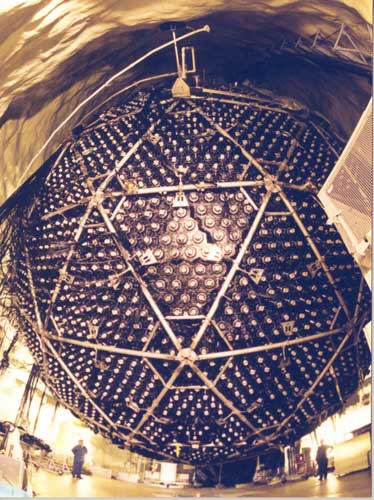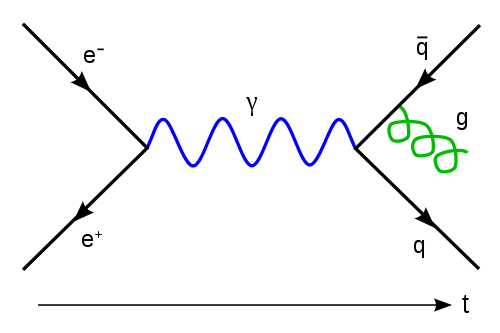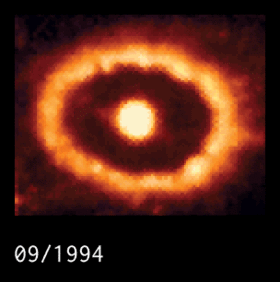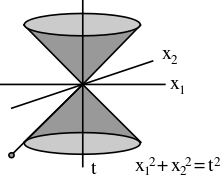Description
This is an analysis of the consequences from the OPERA experiment, which measured the speed of neutrinos to be travelling faster than light.
The OPERA experiment was an observation of muon neutrinos apparently travelling faster than light. The OPERA instrument, which stands for Oscillation Project with Emulsion-tRacking Apparatus, was used to measure the neutrinos. This was a paper published in September 2011, observing that muon neutrinos sent from CERN were travelling faster than light by a factor of roughly 1 in 40,000.
What the result implies
In special relativity, it is not possible to travel faster than the speed of light. So if this observation holds true, it means the muon neutrino is a particle can be used to transmit information faster than light speed – which is a direct violation of causality[i].
If faster-than-light is possible, then there exists faster-than-light particles (tachyons)[ii]. Tachyons are not consistent with the known laws of physics, and its very existence causes retro causality within the theory of special relativity.
Fundamental consequences for special relativity
Faster-than-light is effectively time travelling, according to Einstein’s theory of special relativity – and with time travelling breaks all sorts conventional rules, like symmetry of thermodynamics, and creates paradoxes, such as the grandfather paradox. Either way, if the result is true, to accept the result we must give up either causality (to permit time travel), or give up absolute relativity (to allow a variable speed of light)[iii].
The reverse causality effect
The reverse causality (aka retro causality) is cause-and-effect reversed, which is a consequence from the possibility of time travel. In a Minkowski spacetime, the reverse causality effect implies that the future light cone can affect the past light cone, and vice-versa.
Although retro causality is theoretically impossible due to the interpretation of Einstein’s special relativity, the concept of retro causality has been used, such as in the Feynman diagram[iv].
The Feynman diagram of electro-positron annihilation interprets time moving from left to right – which implies that the positron is an electron, moving back in time, which then implies that retro causality is possible[v].
Supernova of 1987
The supernova of 1987, aka SN 1987A, was the death of a blue supergiant. It is significant because it was the first opportunity for modern astronomers to observe a supernova with scientific cameras. During a supernova collapse, 99% of the energy is radiated away in the form of neutrinos.
According to the theory of special relativity, the neutrino should have a velocity related to their mass. If they have any mass, they cannot possibility reach light speed (requires infinite energy).
However, during the SN 1987A, approximately three hours before visible light was observed, a burst of neutrinos were observed by three separate observatories[vi]. This implies neutrinos have a negative mass (or at least neutrino’s mass cannot be determined from measuring the speed which it travels). This result of speed of neutrinos being faster than light is also what the OPERA experiment concluded[vii].
The ICARUS detector
An independent verification of the OPERA experiment was conducted, in the same laboratory, using a different neutrino detector – the ICARUS detector, which stands for Imaging Cosmic And Rare Underground Signals. The conclusion found no discernible difference between the speed of neutrino and the speed of light[viii]. The consequences of these observations imply that the neutrinos either have no mass, or can travel faster than light.
My opinion and conclusion
I prefer to think that faster-than-light just may be possible – for two reasons:
Einstein’s special relativity postulate on the speed of light is invariant in inertial frames, but it does not specify a particular value of the speed light. The measurement for the speed of light in vacuum is experimentally determined. But vacuum has an energy associated with it[ix], according to the Scharnhorst effect, which implies there are different types of vacuums. The Scharnhorst effect is a hypothesis that light signals can travel faster than c between closely spaced conducting plates, due to quantum electrodynamic effects[x]. Such vacuum is called a Casimir vacuum. So if the speed of light depends on the material it is in, perhaps we have not yet measured the speed of light in the type of vacuum that has a lower refractive index. So, since the speed of light is experimentally measured in vacuum, it may be possible that the tau muons travel differently. Special relativity does not specify what the speed limit is, only that there exists a speed limit – and it is speed of light as we measured it to be.
Alternatively, if we consider the multiverse theory, which comprises of all that could have ever existed/happened, perhaps travelling back in time is possible – since in one universe the effect is already created by the cause. Although we cannot test for the existence of other universes, this requires a large leap of faith. Since we can’t test for it, it can’t be ruled out as a possibility.
Either way, the measurement of the speed of neutrinos is a fascinating field and has lots of potential.
Bibliography
[i] Colladay, Don; Kostelecký, V. Alan (1998). “Lorentz-violating extension of the standard model”. Physical Review D 58 (11). arXiv:hep-ph/9809521. Bibcode 1998PhRvD..58k6002C.doi:10.1103/PhysRevD.58.116002.
[ii] Chodos, A.; Hauser, A. I.; and Kostelecký, V. Alan; The Neutrino As A Tachyon, Physics Letters B 150, 431 (1985)
[iii] Traveling Faster Than the Speed of Light: A New Idea That Could Make It Happen Newswise, retrieved on 24 August 2008.
[iv] Max Tegmark (2003). “Parallel Universes”. In “Science and Ultimate Reality: from Quantum to Cosmos”, honoring John Wheeler’s 90th birthday. J. D. Barrow, P.C.W. Davies, & C.L. Harper eds. Cambridge University Press (2003). arXiv:astro-ph/0302131. Bibcode 2003astro.ph..2131T
[v] Adam; Agafonova; Aleksandrov; Altinok; Alvarez Sanchez; Aoki; Ariga; Ariga et al (2011). “Measurement of the neutrino velocity with the OPERA detector in the CNGS beam”. arXiv:1109.4897 [hep-ex]
[vi] Arnett, W.D.; et al. (1989). “Supernova 1987A”. Annual Review of Astronomy and Astrophysics 27: 629–700. Bibcode 1989ARA&A..27..629A.doi:10.1146/annurev.aa.27.090189.003213.
[vii] J. Palmer (16 March 2012). “Neutrinos clocked at light-speed in new Icarus test”. BBC. Retrieved 17 March 2012.
[viii] Associated Press (16 March 2012).“Einstein Proved Right in Retest of Neutrinos’ Speed”. New York Times. Retrieved 2012-03-17.
[ix] “What is the ‘zero-point energy’ (or ‘vacuum energy’) in quantum physics? Is it really possible that we could harness this energy?”. Scientific American. 1997-08-18. Retrieved 2009-05-27.
[x] The original paper was G. Barton, K. Scharnhorst (1993). “QED between parallel mirrors: light signals faster than c, or amplified by the vacuum”. Journal of Physics A 26 (8): 2037. Bibcode1993JPhA…26.2037B.doi:10.1088/0305-4470/26/8/024. A more recent follow-up paper is K. Scharnhorst (1998). “The velocities of light in modified QED vacua”. Annalen der Physik 7 (7–8): 700–709. arXiv:hep-th/9810221. Bibcode1998AnP…510..700S.doi:10.1002/(SICI)1521-3889(199812)7:7/8<700::AID-ANDP700>3.0.CO;2-K.





